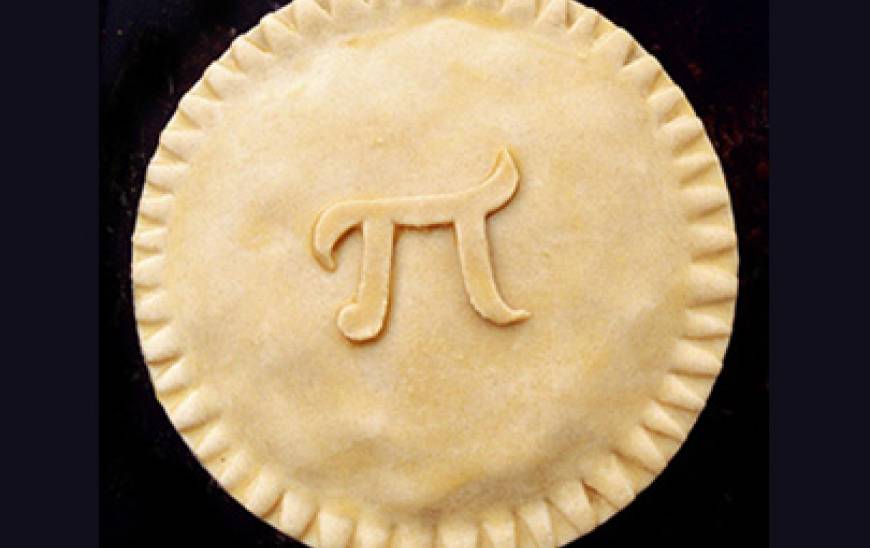The Stanford School of Earth, Energy & Environmental Sciences is now part of the Stanford Doerr School of Sustainability.
This page is currently being maintained for archival purposes only. For the latest information, please visit us here.
American Pi
There will be prizes for best sweet pie, best savory pie, and most creative pie when the Stanford Alpine Project has its annual Pi Day Celebration on Friday. There won’t, however, be any awards for computation or memorization of the most digits of pi.
By
Bruce Anderson
March 7, 2013

SAP president Mairi Litherland says that pie makers and pie eaters alike are invited to the 5 p.m. event, which will be held in Room 220 of the Geology Corner (Bldg. 320) and will raise money for a September trip to Italy. Bakers who bring a pie will be admitted free and reimbursed for their expenses. They will also compete for prizes. Everyone else can pay $6 and eat all the pie they want. Pie fans will also have a chance to vote for their favorites. “Usually we have more pie eaters than pie makers so we purchase some backup pies,” says Litherland, a PhD student in geophysics. “We don’t want anyone to go home hungry.”
Pi Day is a worldwide observance on March 14 (3/14) that celebrates the mathematical constant—rounded off to 3.14159—that is the ratio of the circumference of a circle to its diameter. (The SAP event is on the 15th. “We sometimes call it Approximate Pi Day,” Litherland says.) Pi, symbolized by the Greek letter Π, is an irrational number. It is central to geometry and trigonometry but used in many other fields, including probability, number theory, thermodynamics, and chaos theory.
The first large-scale Pi Day observance was reportedly held at San Francisco’s Exploratorium in 1988, as visitors and staff marched in circles and then ate fruit pies. MIT posts its admissions decisions at 6:28 p.m. (6.28, being tau, or double pi) on Pi Day. March 14 is also Albert Einstein’s birthday. At Princeton, where Einstein worked for two decades, the community gives walking tours of his old neighborhood and holds an Einstein look-alike contest. “I’ve been celebrating Pi Day since I was a child,” Litherland says. “It’s a really good way to convince kids that math is fun.”
Litherland is a fourth-year PhD student whose doctoral project is analyzing the metamorphic core complex of Nevada’s Ruby Mountains. She says the student-run Stanford Alpine Project was founded in 1989, and its goal is to take those with an interest in geology to spectacular geologic locations around the world on the club’s biannual trips.“They raised money to fund their first geologic expedition, which was to the Swiss Alps, by selling furniture that was going to be replaced after the Loma Prieta Earthquake,” Litherland says. “Thus the name of our club—even though we haven’t been back to the Alps since then.” Instead, SAP has taken students to Iceland, New Zealand, and India. This fall’s two-week trip to Italy will return to the Alps but will also hit the Northern Appenines, Mount Vesuvius, Mount Etna, and the geothermal fields in Tuscany’s Larderello.
Learn more about the Stanford Alpine Project.
Bruce Anderson holds a B.A. degree in communications from Stanford and has served as the editor of Stanford magazine.



